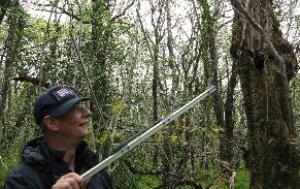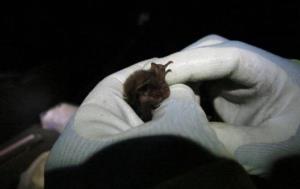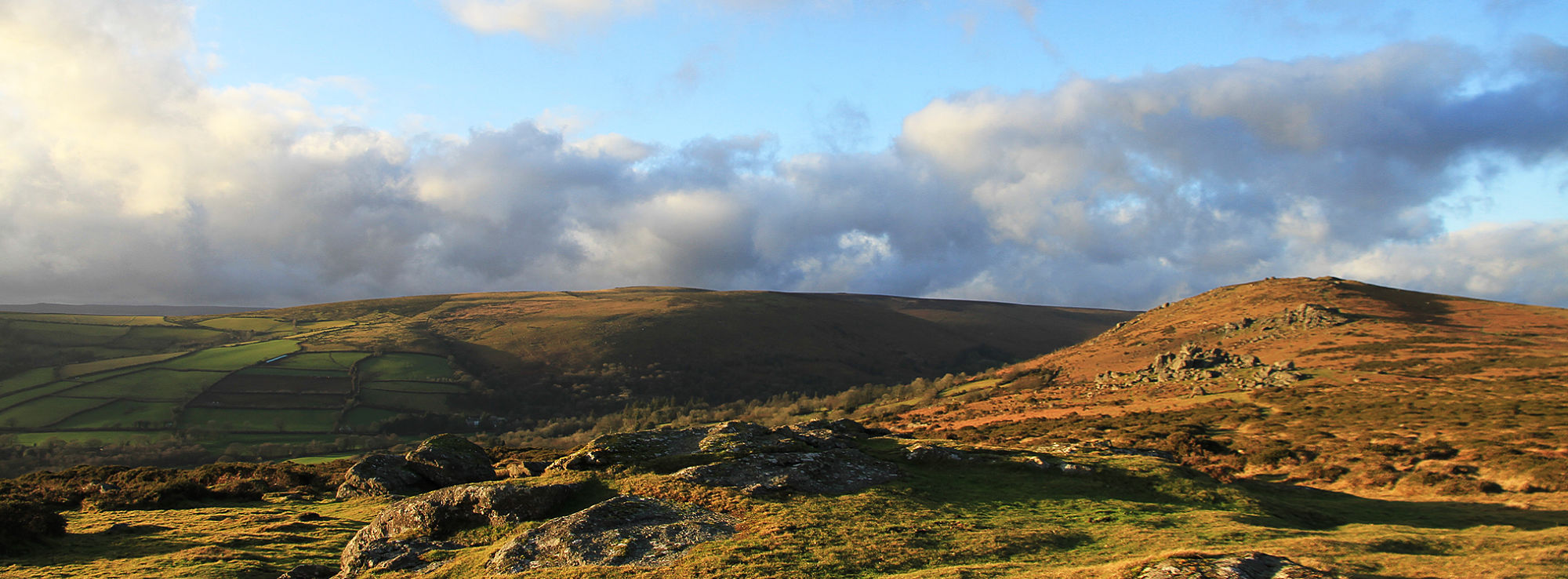Project Review Meeting – September 2015
After a busy summer, Bristol University bat researcher Andy Carr and some dedicated volunteers got together at the Woodland Centre at East Dartmoor NNR to review the Bovey Valley barbastelle bat tracking project.
The project started in April this year when a team of volunteers began training in the use of radio tracking and data recording equipment. Andy then set up a series of trapping nets to capture and tag bats and all was going well until the Dartmoor weather intervened. With various cold and unsettled spells the mist nets and harp traps were not quite as effective as had been hoped for. He initially wanted to track 30 of these rare woodland bats but, through 25 capturing nights, only 19 barbastelles were caught. It was not an entirely gloomy outcome though because there were many useful results and a lot of local habitat information was gained.


Out of the total of 54 bats caught there were 10 different species which demonstrated just how diverse life is in the Bovey Valley woods. Catching free-flying bats in woodland is known to be challenging but information about the best methods, local sites and conditions are all available as a result; an area where the trees funnel the bats along the Old Manaton Road became the most successful location. Also the optimum times of night for bat activity were identified even though there is no truly predictable pattern of behaviour. One important discovery made by Andy, with the help of lepidopterists, was that some moths fly at specific times during the night which influences when barbastelles will forage.
Further interesting discoveries included a maternity colony where counts revealed a regular roost for 11 bats. An old oak tree near Becky Falls was used for a long time but, from time to time, barbastelles move their roost to avoid parasites; mites and ticks. Andy’s plan was to track some female bats with increased energy demands due to their pregnancy or lactation. Though the seasonal vagaries of the weather delayed the breeding season some good evidence was gathered on these bats and, while some volunteers were disappointed by the limited appearances of the barbastelles, they soon spotted a pattern in the behaviour of the females with dependent young. They would leave the roost then return to feed their young and leave again later to continue foraging. This evidence supports previous surveys that show the barbastelle, known for a slow reproduction rate, will take great care to nurture its single pup to give it the best chance of survival.
Andy also described the method of tagging the barbastelles and explained how one of the 2015 bats had previously been ringed in 2007, showing how long they can live – up to 20 years in some cases.
Now the field work is over Andy’s next task is to go back to Bristol to process and analyse all his data. He will also be conducting laboratory DNA analysis of bat droppings he collected while in the Bovey Valley. Again, this will provide information on the diets of the barbastelles and will help the Woodland Trust and Natural England to manage the woodlands. It will also be of interest to land owners further afield as the bats have been regularly tracked foraging at Chudleigh Knighton heath (Devon Wildlife Trust reserve) some 7km down the valley.
Later in the evening Susan, a Natural England volunteer, showed some of the film she shot using CCTV cameras at some of the roosts. Some of the edited highlights revealed interesting activity and flight patterns of barbastelles and even captured the unique flight style of a long-eared bat.
There is still much to do to complete the project and Andy’s report will be complete in spring 2016. The project’s legacy should be particularly useful because, not only have a number of local people learned about rare woodland bats, but further study and habitat enrichment work will carry on in the future. A set of temperature data loggers are closely monitoring the climatic conditions in the reserve, sound recorders will be used to monitor bat activity, a programme of transect surveys will begin and a set of bat roost boxes are already being built. Management of the East Dartmoor National Nature Reserve will benefit greatly with all this additional information.
The evening was rounded off with a presentation to Mike Treble as the most committed volunteer who helped throughout the summer. He has regularly been there, often done that and now he has the t-shirt …of a roosting bat!
by Matt Parkin





